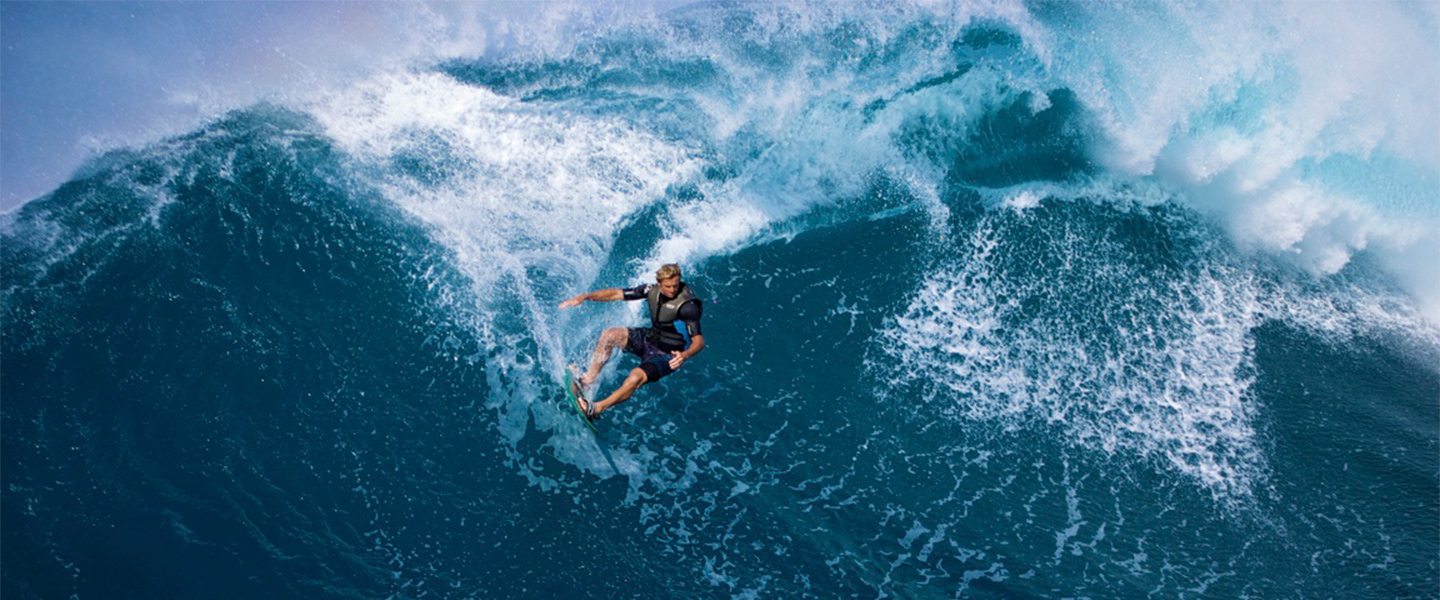Rory Kennedy, the youngest daughter of Bobby and Ethel, has made a name for herself as a fearless documentarian, one who tackles politically charged topics with an expert eye for detail. She’s the filmmaker behind Emmy-winning 2007 documentary, Ghosts of Abu Ghraib, which explores the Iraqi prisoner abuse scandal that rocked the military in the early aughts; and 2014’s Oscar-nominated Last Days of Vietnam, which tackles the harrowing final weeks of the conflict and the chaotic evacuation of troops and civilians.
But Kennedy’s latest effort, Take Every Wave—which debuted at January’s Sundance Film Festival and will see a limited release in the U.S. on Sept. 29—is somewhat of a departure for the filmmaker because of its rather apolitical, noncontroversial focus: surfing legend Laird Hamilton. Even the man himself wasn’t entirely sure Kennedy was on board at first. “I don’t necessarily think Rory had full interest in the project until she began to understand me and my story,” Hamilton tells RealClearLife. “She realized it wasn’t about surfing; it’s about being human.”
Actually, we’d like to respectfully disagree with Hamilton on that last statement. What he meant to say was “It’s about being superhuman.” The 53-year-old, who splits his time between Malibu, California, and Kauai, Hawaii, has become world-famous for his death-defying feats of big-wave surfing glory (see his “Millennium Wave” ride below) and otherworldly athletic prowess.
Hamilton, who jettisoned formal education around high school to devote his every waking moment to the sport of surfing—or some extension of it—has also become a highly successful entrepreneur and businessman. (He tells us if he were to ever go back to school, he’d probably study engineering, mathematics, or aviation, giving you an idea of how his mind works.) And though he’s seen as somewhat of a black sheep or controversial character in the greater surfing community because he’s shied away from competitive surfing and doesn’t play by the rules. But that hasn’t halted his bulldozer-like forward momentum into the annals of surfing legend and seeming ability to turn everything he touches into gold. “In my position, I’m fortunate to possess what I call the most uncommon sense, which is common sense,” he says, tongue firmly in cheek. “Some of the most successful people I know come from unorthodox backgrounds.”
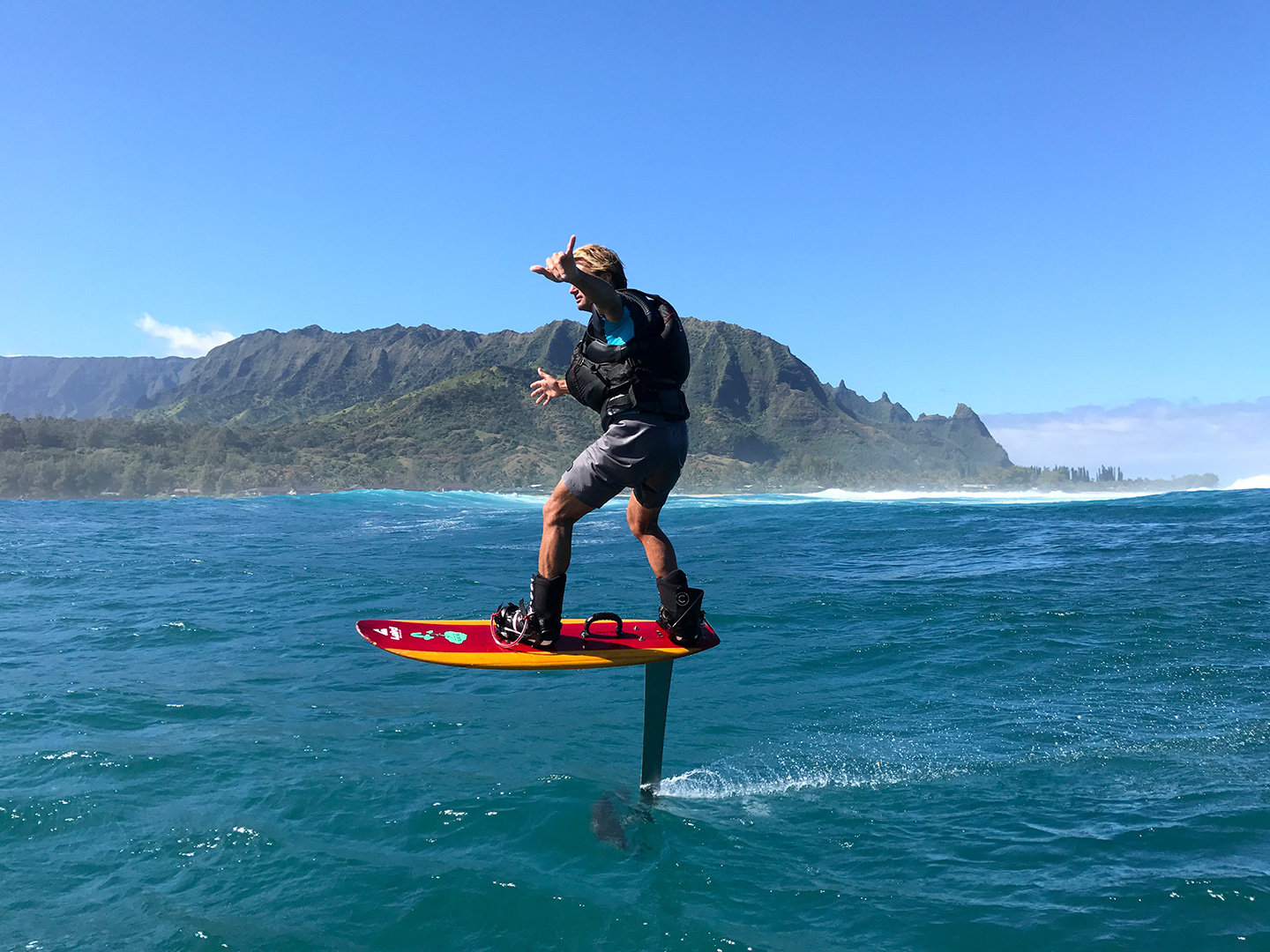
Your first reaction when seeing the footage of his surfing runs, whether it be in the new documentary or plastered all over YouTube, might be to dismiss him as just another blonde-haired daredevil playing pinochle with the grim reaper. But arguably—and somewhat paradoxically—it’s that overactive death wish that has made him such a success time and time again. For one, Hamilton’s seemingly always at the cutting edge of the next big thing in surfing, whether it be wakeboarding; kiteboarding; tow-in surfing (which he co-invented and got him atop the Millennium Wave); or his latest obsession, foiling, which he tells RealClearLife he’s actually been doing for decades. It’s basically surfing, but above the water, while a fixed rudder, shaped like half of an America’s Cup sailing ship, traces itself through a wave (see picture above). When told that The New York Times had recently done a sprawling feature on foiling’s rise to popularity among the Silicon Valley elite, Hamilton quipped, “The New York Times piece for me came out 20 years ago, [but] I was the only one who read it!”
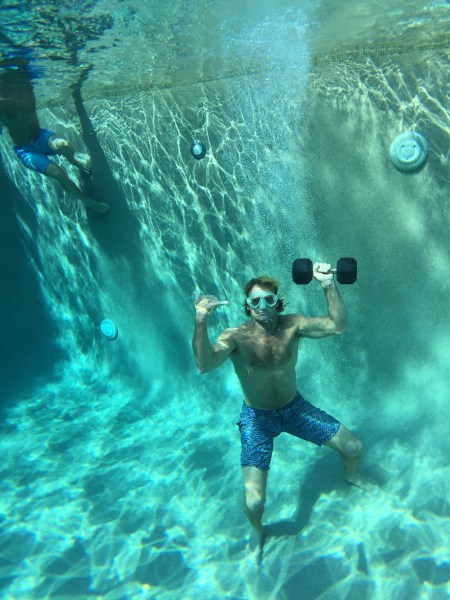
To pull off feats of fearless brilliance, though, Hamilton has had to push his body beyond the normal gym-rat limits. His six-day-a-week workout plan makes what the meathead is doing next to you at Equinox look like child’s play. This ethic has also led to a highly successful health-and-fitness empire, the main tendril of which is Extreme Performance Training (or XPT). Hamilton co-invented XPT with his wife, Gabrielle Reece, and ultra-endurance trainer Brian Mackenzie. The fitness program features high-intensity weight training; performance breathing exercises (think: high-octane meditation); pool sessions, which include exercises such as swimming laps in a pike position or running with dumbbells underwater; and extreme recovery, which takes place in both a 220-degree sauna and silver tubful of ice water. Says Hamilton of his creation: “The [best] thing about XPT, for me, is the profound effect it has on the people who participate, and it’s just a continual reminder to [me and my wife that we] are not completely crazy, and that these things that we think have these effects on us, do, and they have it on other people, too.” (XPT acolytes include friend and current New York Knicks center, Joakim Noah, who Reece says trains with them on the offseason; former NFL linebacker Bill Romanowski; gold-medal Olympian Kerri Walsh; and Scrubs actor John C. McGinley.)
Hamilton and Reece—herself a world-class athlete, former pro volleyball player, model, MTV host, motivational speaker, author, and mother of three—tour the country and personally provide three-day XPT “experiences” for up to 25 people at a time, with a cost of $5,000 a person. (They do about 8-10 per year in total.) Reece also tells RealClearLife that the next piece of the XPT puzzle will be certifying trainers all over the U.S. (à la CrossFit), so that they can spread the gospel of XPT more organically. That will likely spawn single-day classes, which Reece estimates at about $1,000 per session.
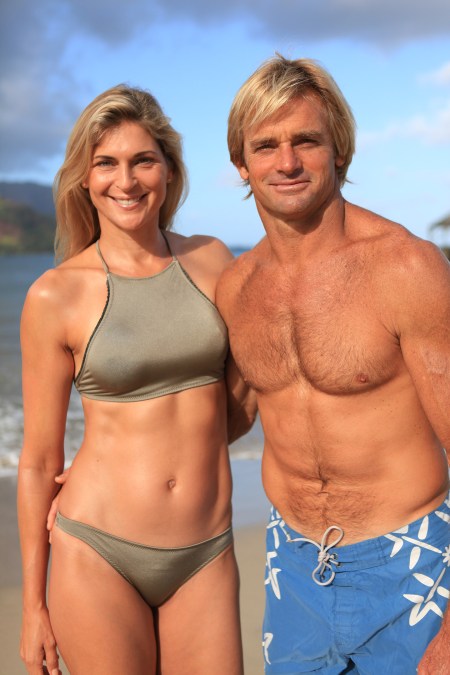
Getting your body obliterated both on and offshore is that much more manageable when its primed with the right nutritional fuels— another area Hamilton takes extremely seriously. “I would probably describe most of the way I eat as ‘nontraditional,’” says Hamilton, when we mention a moment in the documentary when he quite nonchalantly makes a tiny crack in the top of an egg and sucks out the insides, raw. Hamilton tells RealClearLife that he’s constantly tinkering with what he’s putting into his body, looking for new sources of energy. That, too, has led to a successful business venture: the Laird Superfood line, which includes non-dairy creamers, coffee, cocoa, sugar substitutes, and mushroom powder (a natural energy enhancer). He tells RealClearLife he’s also a big fan of kombucha and chaga tea, a type made from medicinal mushrooms, that simmers all day on his stove and he drinks before going to bed. In the morning, he chugs down water seasoned with Himalayan salt and likes to spike his morning coffee with “different types of fat.” (Like the man said, nontraditional.) “The more I look at it, the more I realize that [superfood is] going to be … the way we go in the future,” he says.
While it’s clear that Hamilton has an entrepreneurial knack that stems from his no-effs-given athleticism, RealClearLife wanted to dig deeper into Hamilton’s psyche. We wanted to get inside his head, and figure out just what is going on in there when he, say, tackles a Brobdingnagian wave or comes up with the next “curveball” (his words, not ours) to throw the sport of surfing. In trying to nail this down, we came upon a 2004 TED talk by Hungarian psychologist Mihaly Csikszentmihalyi, who discusses the notion of “flow” activities—or heightened states of euphoric creativity—through which people, especially those in creative fields, find happiness and meaning in their lives. When we asked him about this, Hamilton responded: “I’ve been exposed to being in a ‘flow state’ and been around a ‘flow state’ since I was very young. I think it’s connected more to our primal survival system, and that ability to tap into that uninhibited, undistracted state of mind, where within creativity, [you’re exposed to] a pure understanding of things.” He continues: “In a ‘flow state’ of performance, you have such acute assessment and decision-making that it becomes an effortless act. It’s so simple when you’re in that frame of mind.” Hamilton’s wife concurs, telling RealClearLife that she’s in constant awe of her husband. “I am drafting off of the amount of wattage and energy that he puts out every single day,” says Reece.
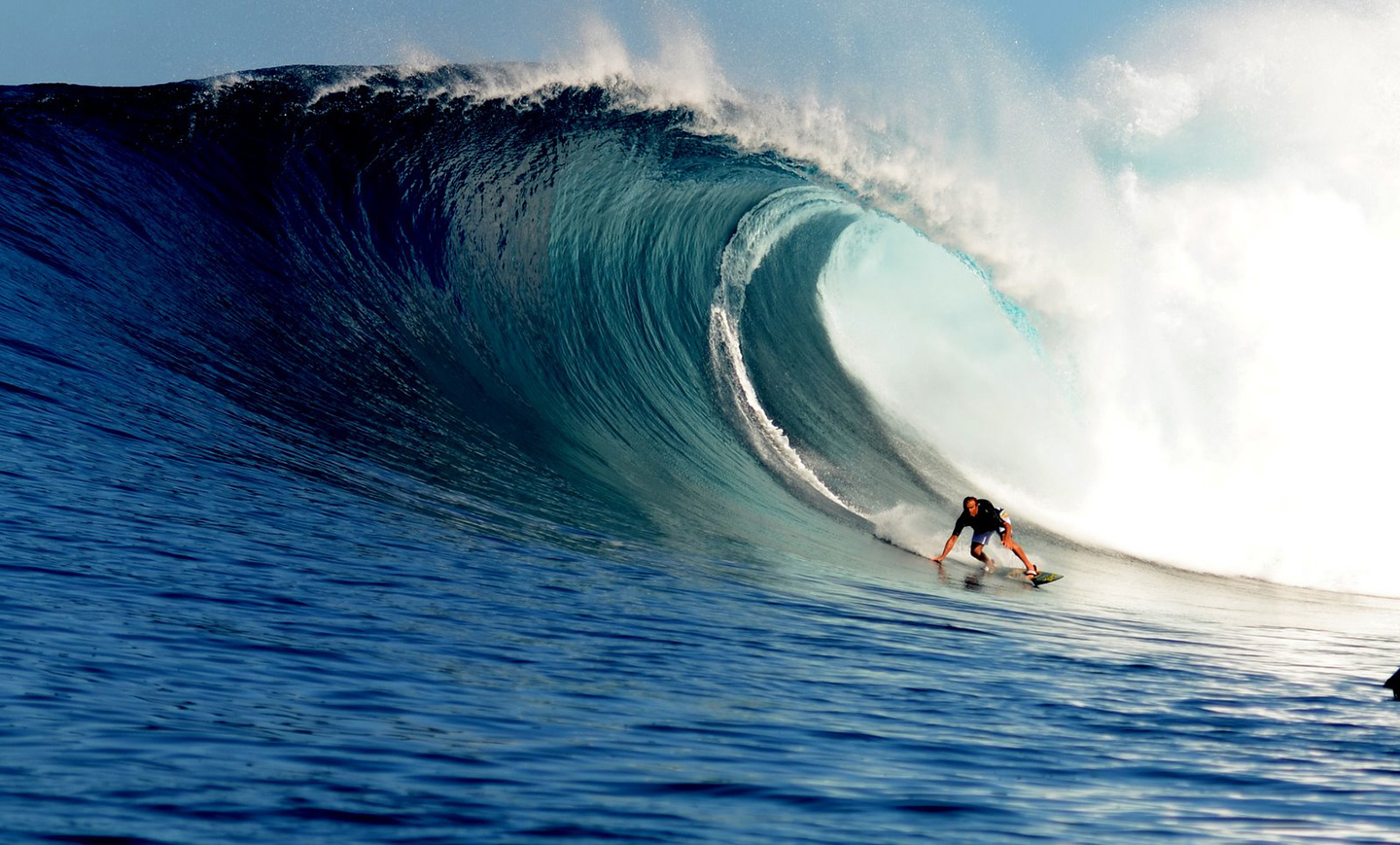
But being successful isn’t just about creating, it’s about doing, he says. Hamilton explains that it’s as much about bringing his creative acts to fruition—whether it be figuring out how to optimize his foil board to get a smoother ride or jumping in an ice-bath after a pulverizing workout—that validates his many ideas for him. “I feel levels of accomplishment, not through monetary gain but creative exploits,” he explains.
Something that occurred to RealClearLife long before jumping on the phone with Hamilton was that, despite not having a Harvard degree or overflowing trophy case, Hamilton had a decidedly politics-friendly last name and that he’d make a great candidate someday. (Maybe that’s what Kennedy secretly saw in her subject?) Go to any major surf break around the world, and you’ll find what is known as a “lineup,” or pecking order of surfers, angling to ride any given wave. As Take Every Wave demonstrates through archival footage and interviews with Hamilton’s friends and family, from the very beginning, he was the ruler of the roost. He was the guy at the lineups that hogged the best waves and would literally ride anything else, no matter if it wiped him out or left others in stunned silence. He was also the natural leader of the various, tightly knit surf groups he joined. Hamilton’s also been an outspoken environmental activist, lobbying against offshore drilling and throwing his support behind cleaning up the ocean. So it’s not all that crazy to picture Hamilton in a suit with an American flag pin on his lapel, shaking hands with constituents at some point down the line. RealClearLife couldn’t help but ask: Might he ever run for political office—or dare we say, president of the United States? “The one thing that you notice is, it seems like the smartest people really don’t want to have anything to do with [being president],” he tells us. “At the end of the day, the best leaders are the ones that lead by example, and that if leading by example was the pretense for one of these positions ….” He trails off and changes the subject, momentarily, then comes back, full force: “I heard a great thing about George Washington, that he was relentless and ruthless in battle; he was in the front of the charge. No wonder he was such a good leader. [It’s] hard not to respect that and follow that,” he says. “I wish that more leaders that were in positions of influence were doing that. I think we all have a certain responsibility to ourselves to feel good about ourselves, and you feel good about yourself when you follow the words that you preach and when you lead by example.”
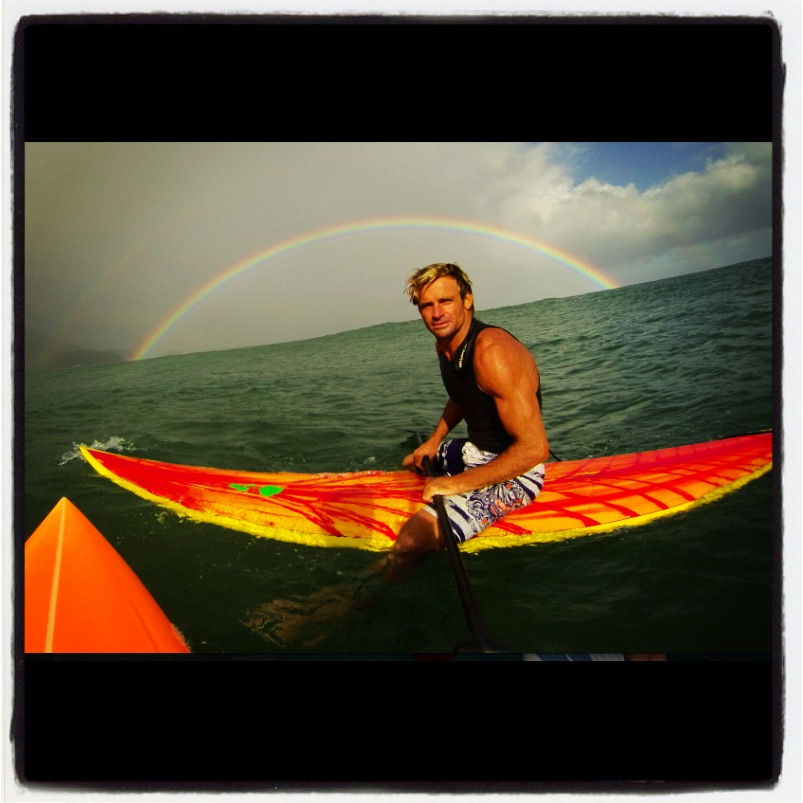
Ultimately, if you can believe it, Hamilton’s really not after fame or fortune or even political office; he’s just trying to be. “You have the physical, the mental, the artistic—all these different parts of the wheel—and you’re trying to create balance,” he explains. When we broach the subject of longevity, he says he sees it more as a function of performance than of actually beating back death. Speaking metaphorically, he says, “I don’t know how long the run is down here, and my goal isn’t to make the run as long as I can. It’s just to perform as well as I can along the run, and if it goes long, I want to perform long.” He continues: “I’m just trying to get myself in the best position I can be in to perform at the highest level I can for the longest period that I can.” To that sentiment he adds the old adage on retirement, “You can never have too much fun”—but with a caveat attached: “They just forgot to tell you that you have to be in really good shape to do it.” So does that mean he might retire someday? “There’s no such thing,” he says. “Retirement is when you’re no longer here.”
Whether you’re looking to get into shape, or just get out of a funk, The Charge has got you covered. Sign up for our new wellness newsletter today.
